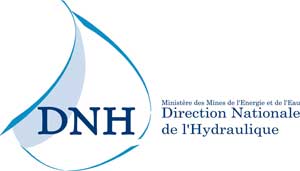24 October 2016
This is the last OPIDIN bulletin of 2016. The flood at Mopti has reached its highest level (657 cm) on 19 October and has started to decline, but further downstream the water still goes up. OPIDIN predicts that the flood will reach its peak between 22 and 26 November in Akka and between 3 and 11 December in Diré. The last dozens of years, cows were allowed to cross the river at Diafarabé during the course of November. That will not be possible this year, since in November the floodplains will still be covered by water. In 2016, the floodplains will become available for grazing in the first half of December.
The flooding in 2016 will be as high as 1994 and 1999. These three years stand out as extremely wet years compared to other years since 1970. However, compared to the years before 1970, 2016 may be considered as a “normal” year. For more details see graph below.
IMAGE
OPIDIN predicted already on 1 August that the flood in 2016 would be high (650-690 cm), a prediction being based on the high water level in Mopti on 1 August and the above-average rainfall in the Upper Niger in July. Indeed, the water level raised fast in August, even 2 metre in one month. There was so much rainfall in the Upper Niger in early August and the water level at Mopti increased so fast that OPIDIN upgraded its prediction of the peak flood by 40 cm between 6 and 20 August. Since 20 August until 27 September the daily prediction remained at a same level (between 670-700 cm), but then slowly decreased to arrive finally at 657 cm on 19 October. OPIDIN lowered its predicted flood peak because the water level in Mopti hardly increased anymore in September and October (only 42 cm between 4 and 29 September, and only 22 cm between 29 September and 20 October). Compared to previous years, the flood level in 2016 levelled off already a very long time before the actual peak was reached. One explanation is that the rainfall in the Upper Niger was very high before mid-August, but did not deviate from average, or was below average, in the weeks after. The graph below shows the increase of the water level in Mopti (blue line) and the daily prediction of the peak flood level (yellow line).
IMAGE
The predictions of OPIDIN are based on data collected in the past. For instance, when the water level in Mopti has increased already to 400 cm on 1 August, it is obvious from previous years that the flood will be high. Comparing different years, the model calculates the probability that the flood peak will reach a certain level given the observed water level in Mopti on 1 August, it does the same for the water level reached on 2 August, etc. The daily prediction could further be improved by adding in the model the rainfall in the Upper Niger during the preceding three weeks. The prediction can never be very accurate, however, certainly not in August, because the flooding of the Inner Niger Delta river will deviate from the prediction depending on the rainfall later in the season. This year, the rainfall after mid-August was below average, by which the prediction of OPIDIN in mid-August arrived at a peak level being somewhat too high. Another year, it will be the other way around. These deviations cannot be prevented, unless the future rainfall for the next two or three weeks might be predicted accurately and integrated in the model.
The OPIDIN website was launched in June 2013. The number of visitors reaches each year its peak in September, which was to be expected assuming people visit the site to know the predicted flood level in the months before the actual peak is reached in October - November. For the same reason, OPIDIN is less often visited between October and June.
It took some time before the website was found by the potential users. Comparing the month September, the number of visits increased between 2013 and 2016 from 155, 257, 408 to 612 this year. So far, the OPIDIN site had 12,114 visits by - in total - 9175 users, spending on average 129 seconds on the site. When the visitors are split up per country, there were still more visitors in Europe than in West Africa, but when a selection is made per city, most users were found in Bamako, Mali.
Until 2015, 97% of the visitors used a desktop and not more than 2.3% a smartphone and 0.7% a tablet. This has changed in 2016: 87.4% of the visitors used a desktop, 11.5% a smartphone and 1.1% a tablet. A further increase of mobile users is to be expected as soon as smartphones will become more generally used in Mali.


